CAPSTONE lunar cubesat mission to launch this springby Jeff Foust — February 22, 2022 [SN]
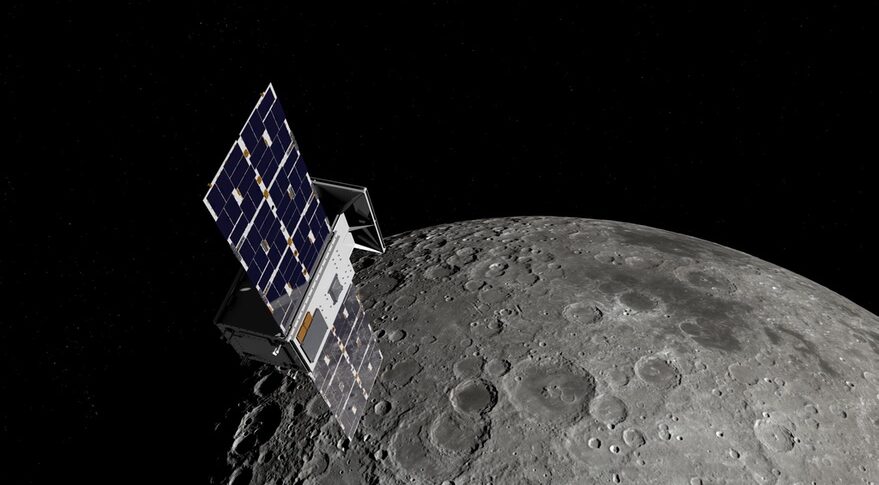 CAPSTONE is expected to launch some time this spring on a Rocket Lab Electron and arrive in lunar orbit three months later, following a trajectory designed to minimize the required propellant. Credit: Advanced Space/Tyvak, a Terran Orbital Company
CAPSTONE is expected to launch some time this spring on a Rocket Lab Electron and arrive in lunar orbit three months later, following a trajectory designed to minimize the required propellant. Credit: Advanced Space/Tyvak, a Terran Orbital CompanyWASHINGTON — A cubesat mission to test a lunar orbit critical to NASA’s Artemis program is in the final stages of preparations for a launch this spring.
The Cislunar Autonomous Positioning System Technology Operations and Navigation Experiment, or CAPSTONE, spacecraft is a cubesat mission that will test operations in the near-rectilinear halo orbit (NRHO) around the moon that will be used by Artemis missions, including the lunar Gateway. NASA selected Colorado-based Advanced Space to develop the mission in 2019.
https://spacenews.com/capstone-lunar-cubesat-mission-to-launch-this-spring/CAPSTONE cubesat ready for cislunar missionby Leonard David — April 14, 2022 [SN]
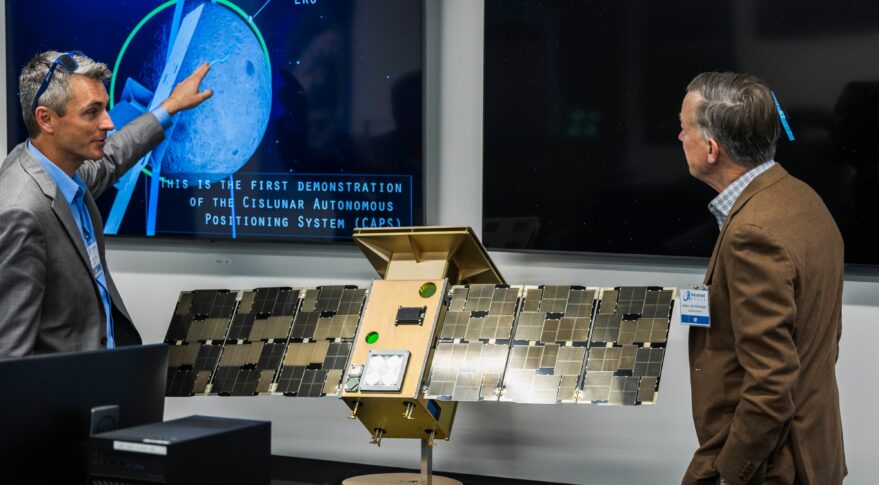 U.S. Sen. John Hickenlooper of Colorado (right) discusses the CAPSTONE cis-lunar mission with Jeffrey Parker, chief technology officer of Advanced Space, over a full-size CAPSTONE spacecraft model. Credit: Advanced Space/Jason Johnson
U.S. Sen. John Hickenlooper of Colorado (right) discusses the CAPSTONE cis-lunar mission with Jeffrey Parker, chief technology officer of Advanced Space, over a full-size CAPSTONE spacecraft model. Credit: Advanced Space/Jason JohnsonBOULDER, Colo. – NASA’s intention to replant bootprints on the moon is getting a kick-start by the launch of a microwave oven-sized smallsat, the Cislunar Autonomous Positioning System Technology Operations and Navigation Experiment, called CAPSTONE for short.
Due for launch no earlier than May 3, CAPSTONE is owned and operated by Advanced Space of Westminster, Colorado. It is to be lofted from New Zealand aboard a Rocket Lab Electron rocket and sent moonward by Rocket Lab’s Lunar Photon upper stage.
https://spacenews.com/capstone-cubesat-ready-for-cislunar-mission/CAPSTONE już jest na Launch Complex 1. Wkrótce rozpocznie się integracja ładunku.CAPSTONE up next for Rocket Labby Jeff Foust — May 3, 2022 [SN]
 The CAPSTONE lunar cubesat mission is now scheduled to launch as soon as May 27 on an Electron. Credit: Advanced Space/Tyvak, a Terran Orbital Company
The CAPSTONE lunar cubesat mission is now scheduled to launch as soon as May 27 on an Electron. Credit: Advanced Space/Tyvak, a Terran Orbital CompanyWASHINGTON — A NASA lunar cubesat mission is now scheduled to launch in late May on a Rocket Lab Electron after resolving issues with the rocket’s kick stage.
In a call with reporters after the May 2 launch of an Electron rocket carrying 34 smallsats, Peter Beck, chief executive of Rocket Lab, said that the next Electron mission will be of the Cislunar Autonomous Positioning System Technology Operations and Navigation Experiment (CAPSTONE) cubesat for NASA. He did not give a date for the launch.
NASA previously projected a launch between May 3 and 15, but in an April 29 tweet, NASA’s Ames Research Center, which manages the mission, said the launch was now scheduled for no earlier than May.
https://spacenews.com/capstone-up-next-for-rocket-lab/Mini-mission to blaze NASA’s trail back to the moonJune 27, 2022 Stephen Clark [SFN]
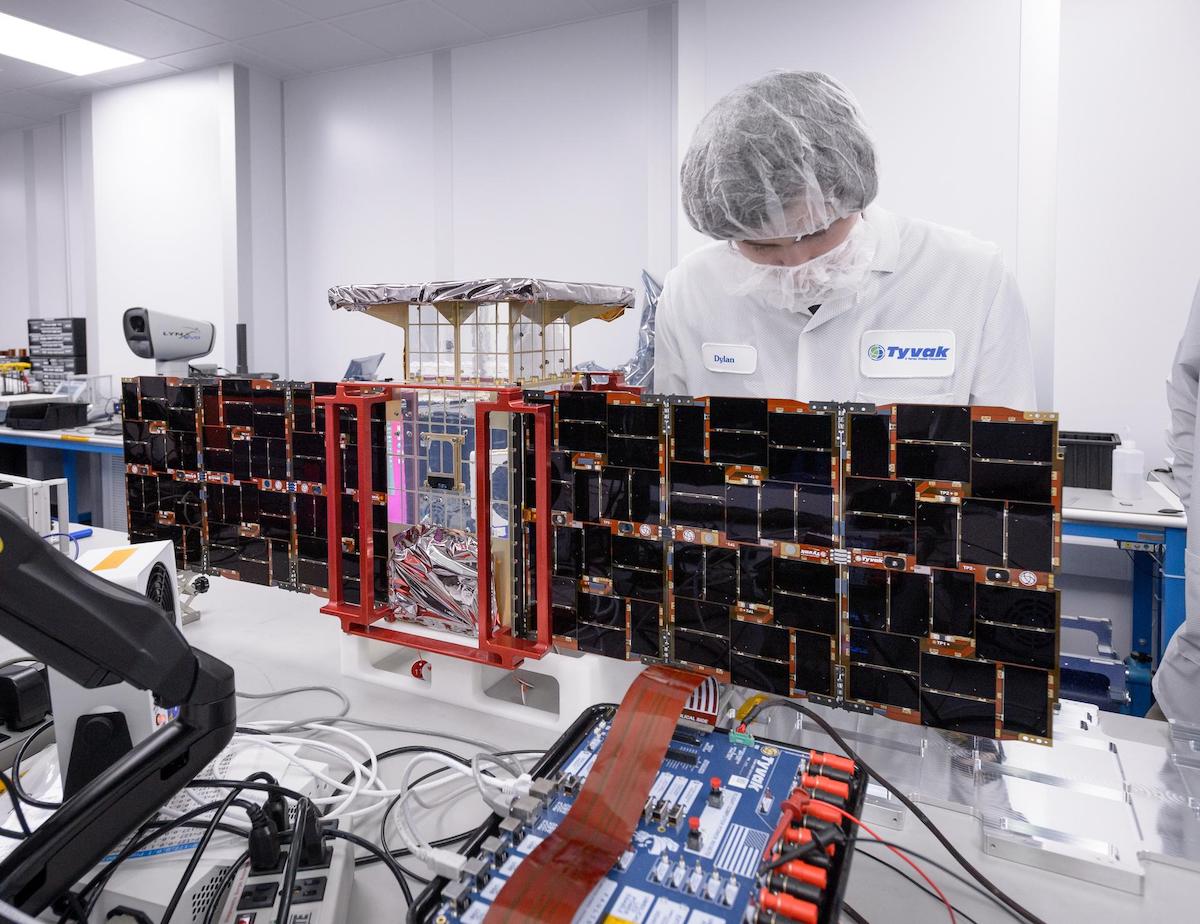 An engineer at Tyvak Nano-Satellite Systems inspects solar arrays on NASA’s CAPSTONE spacecraft. Credit: NASA/Dominic Hart
An engineer at Tyvak Nano-Satellite Systems inspects solar arrays on NASA’s CAPSTONE spacecraft. Credit: NASA/Dominic HartNASA and commercial companies are ready to launch a 55-pound spacecraft from New Zealand to the moon Tuesday on a scouting mission to the orbit where engineers plan to assemble the Gateway mini-space station, a waypoint for astronauts flying to and from the lunar surface.
https://spaceflightnow.com/2022/06/27/mini-mission-to-blaze-nasas-trail-back-to-the-moon/CubeSat launches on scouting mission for NASA’s Artemis moon programJune 28, 2022 Stephen Clark [SFN]
 Rocket Lab’s Electron launcher fires off the pad in New Zealand with NASA’s CAPSTONE mission. Credit: Rocket Lab
Rocket Lab’s Electron launcher fires off the pad in New Zealand with NASA’s CAPSTONE mission. Credit: Rocket LabNASA’s $30 million CAPSTONE mission lifted off Tuesday on a Rocket Lab launcher from New Zealand, heading on a circuitous but fuel-efficient four-month journey into a halo orbit around the moon to test navigation and operations concepts for the Artemis program.
The CAPSTONE mission is modest in scale but opens a new chapter in small satellite technology and is the first new spacecraft to launch under the umbrella of the Artemis program, NASA’s effort to return astronauts to the moon for the first time since 1972.
https://spaceflightnow.com/2022/06/28/capstone-cubesat-launches-on-scouting-mission-for-nasas-artemis-moon-program/Electron launches CAPSTONE lunar cubesatby Jeff Foust — June 28, 2022 [SN]
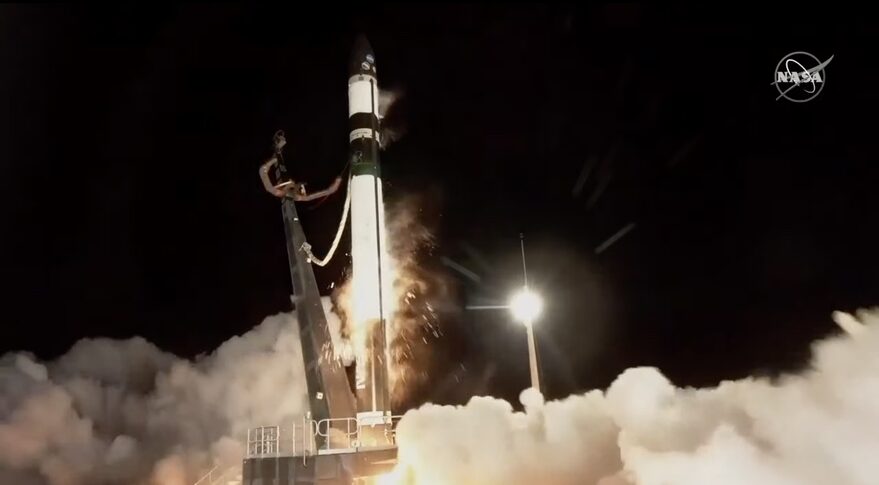 A Rocket Lab Electron lifts off June 28 with NASA's CAPSTONE lunar cubesat. Credit: NASA TV
A Rocket Lab Electron lifts off June 28 with NASA's CAPSTONE lunar cubesat. Credit: NASA TVWASHINGTON — An Electron rocket successfully launched a NASA-funded cubesat mission June 28 that will test the stability of the orbit around the moon the agency plans to use for future Artemis lunar missions.
The Electron rocket lifted off from Rocket Lab’s Launch Complex 1B in New Zealand at 5:55 a.m. Eastern. The Electron deployed the Photon kick stage nine minutes after launch, which then fired its HyperCurie engine twice over an hour to raise its orbit.
Photon will perform a series of burns over five days, gradually raising the apogee of its orbit. A final burn six days after launch will place the vehicle on a ballistic lunar trajectory. Photon will then deploy its payload, NASA’s Cislunar Autonomous Positioning System Technology Operations and Navigation Experiment (CAPSTONE) cubesat.
CAPSTONE will follow a low-energy trajectory to the moon, entering into a near-rectilinear halo orbit (NRHO) around the moon Nov. 13. That trajectory is designed to minimize the propulsion needed by CAPSTONE, a 12U cubesat weighing 25 kilograms, to go into orbit.
https://spacenews.com/electron-launches-capstone-lunar-cubesat/Rocket Lab sees payoff from CAPSTONE launchby Jeff Foust — June 28, 2022 [SN]
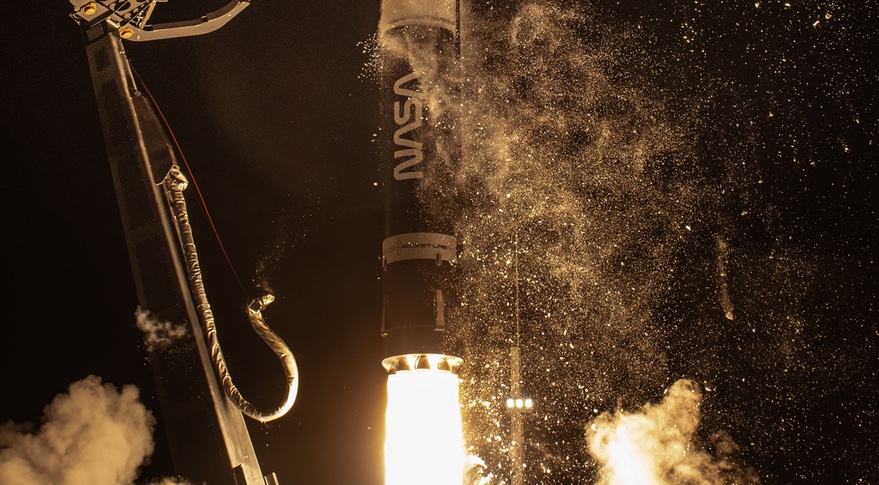 Rocket Lab CEO Peter Beck said the CAPSTONE mission pushed the limit of Electron’s capabilities. Credit: Rocket Lab
Rocket Lab CEO Peter Beck said the CAPSTONE mission pushed the limit of Electron’s capabilities. Credit: Rocket LabWASHINGTON — The successful launch of a NASA lunar cubesat mission was the culmination of two and a half years of work at Rocket Lab that, the company’s chief executive says, could enable “ridiculously low cost” planetary missions.
https://spacenews.com/rocket-lab-sees-payoff-from-capstone-launch/CAPSTONE heads to the moonby Jeff Foust — July 4, 2022 [SN]
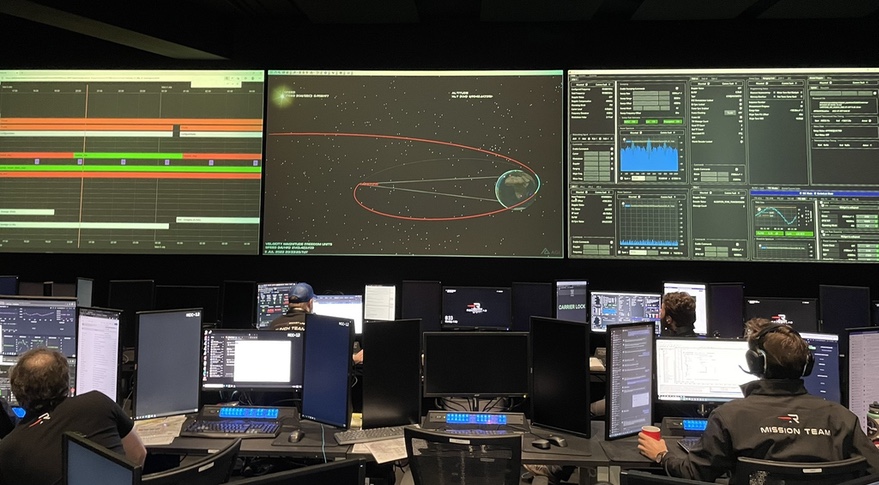 Rocket Lab mission controllers monitor the performance of its Lunar Photon transfer stage before the deployment of the CAPSTONE lunar cubesat July 4. Credit: Rocket Lab
Rocket Lab mission controllers monitor the performance of its Lunar Photon transfer stage before the deployment of the CAPSTONE lunar cubesat July 4. Credit: Rocket LabWASHINGTON — A NASA-funded lunar cubesat is on its way to the moon July 4 after a series of burns by a Rocket Lab transfer stage.
Rocket Lab’s Lunar Photon stage released the Cislunar Autonomous Positioning System Technology Operations and Navigation Experiment (CAPSTONE) cubesat at 3:18 a.m. Eastern, shortly after the seventh and final burn by the Photon’s HyperCurie engine that placed the vehicles onto a ballistic lunar trajectory.
https://spacenews.com/capstone-heads-to-the-moon/CAPSTONE suffers communications problemby Jeff Foust — July 5, 2022 Updated 8:30 p.m. Eastern with Advanced Space statement. [SN]
 CAPSTONE, a cubesat designed to test the lunar orbit that future Artemis missions will use, lost contact with Earth during a second pass with the Deep Space Network after its July 4 deployment from the Lunar Photon vehicle. Credit: Advanced Space/Terran Orbital
CAPSTONE, a cubesat designed to test the lunar orbit that future Artemis missions will use, lost contact with Earth during a second pass with the Deep Space Network after its July 4 deployment from the Lunar Photon vehicle. Credit: Advanced Space/Terran OrbitalWASHINGTON — A NASA lunar cubesat mission has lost contact with Earth a day after its deployment, putting into jeopardy its plans to demonstrate the orbit that will be used for later Artemis missions.
https://spacenews.com/capstone-suffers-communications-problem/CAPSTONE communications restoredby Jeff Foust — July 6, 2022 [SN]
 NASA and Advanced Space say that now that CAPSTONE has resumed communications and is in good condition, they will perform a trajectory correction maneuver July 7. Credit: Advanced Space/Terran Orbital
NASA and Advanced Space say that now that CAPSTONE has resumed communications and is in good condition, they will perform a trajectory correction maneuver July 7. Credit: Advanced Space/Terran OrbitalWASHINGTON — Spacecraft controllers have restored communications with a lunar cubesat that went silent shortly after its deployment earlier this week.
NASA and Advanced Space, the company operating the Cislunar Autonomous Positioning System Technology Operations and Navigation Experiment (CAPSTONE) cubesat, said the spacecraft started transmitting again early July 6. The spacecraft stopped communicating about 11 hours after its July 4 deployment from Rocket Lab’s Lunar Photon transfer vehicle.
https://spacenews.com/capstone-communications-restored/CAPSTONE probe overcomes radio glitch on course for moonJuly 10, 2022 Stephen Clark [SFN]
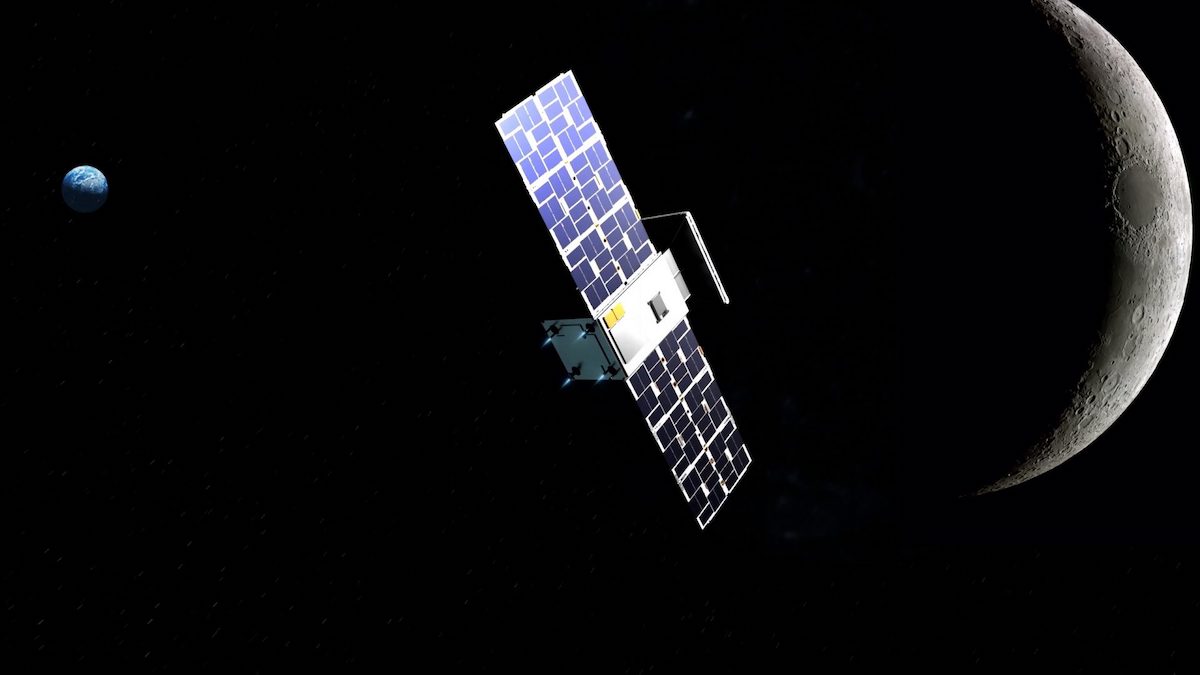 Artist’s illustration of the CAPSTONE spacecraft near the moon. Credit: Terran Orbital
Artist’s illustration of the CAPSTONE spacecraft near the moon. Credit: Terran OrbitalNASA’s CAPSTONE spacecraft, a miniature pathfinder for future lunar crew missions, has overcome a communications outage and performed its first course correction maneuver since a Rocket Lab propulsion module gave the probe a final push toward the moon July 4.
https://spaceflightnow.com/2022/07/10/capstone-probe-overcomes-communications-glitch-on-course-for-moon/